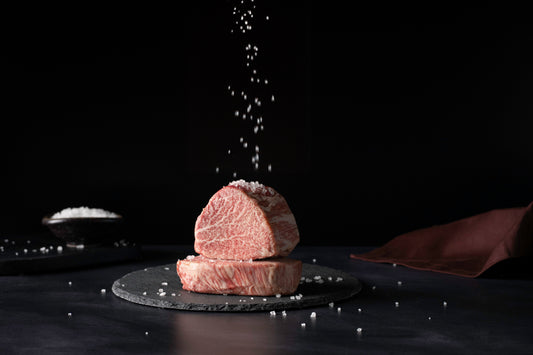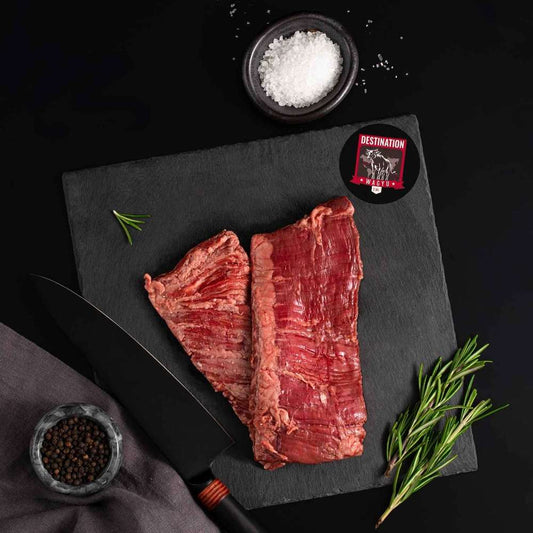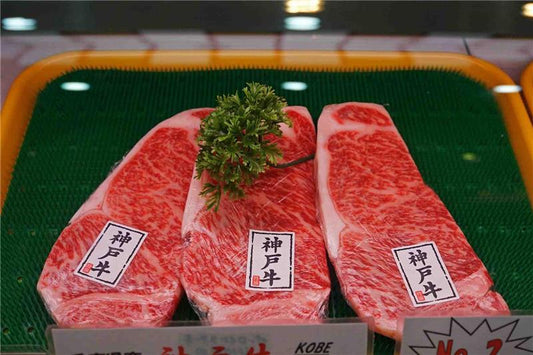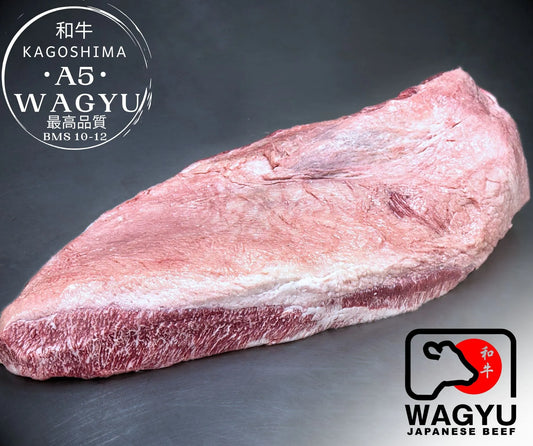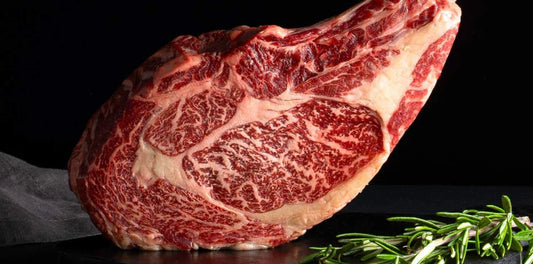When it comes to premium beef, Wagyu is often regarded as the pinnacle of luxury. As chefs, restaurateurs, and culinary professionals, you already know the importance of using quality ingredients to create an exceptional dining experience. However, preparing a Wagyu burger—one of the more unique and challenging ways to showcase this exquisite beef—requires a level of precision and understanding that goes beyond the basics. In this article, I will dive deep into the technicalities of Wagyu, why it elevates the burger to new heights, and the considerations you must make when preparing it. If you’re looking to perfect your Wagyu burger offerings, let’s get started.

Understanding Wagyu: Beyond the Basics
Definition and Origins of Wagyu Beef
Wagyu is a term that gets thrown around quite loosely, especially in non-Japanese markets, but it’s important to understand that not all Wagyu is created equal. “Wagyu” literally translates to “Japanese cow” (和牛), and it refers to a specific type of cattle bred in Japan. The four main breeds of Wagyu are Japanese Black (Kuroge Washu), Japanese Brown (Akage Washu), Japanese Polled (Mukaku Washu), and Japanese Shorthorn (Nihon Tankaku). Of these, the Japanese Black is by far the most prized and accounts for over 90% of all Wagyu beef production in Japan.
The breeding of Wagyu cattle has been honed over centuries, with a strong emphasis on maintaining genetic purity and improving the intramuscular fat distribution—known as marbling—which contributes to its world-renowned tenderness and flavor. In Japan, the rigorous standards for raising and grading Wagyu beef have resulted in the development of regional varieties, such as Kobe, Matsusaka, and Omi beef, each carrying their own geographical distinction and flavor profiles.
A5 Grading System
The Japanese grading system for Wagyu is incredibly detailed, ensuring that only the highest quality beef is labeled as such. The grading is based on two primary components: the yield (represented by a letter from A to C) and the quality (represented by a number from 1 to 5). Thus, an A5 rating signifies the highest yield and the best quality.
But what does this mean for your burger? A5 Wagyu has the most abundant marbling, which, as we’ll discuss in more detail later, greatly impacts the cooking process and final product. The marbling is measured on a Beef Marbling Standard (BMS) score, which ranges from 3 to 12. A5 Wagyu falls between BMS 8 and 12, meaning an exceptionally high level of fat is interwoven with the muscle, creating that melt-in-your-mouth texture. It’s this fat content that makes Wagyu so different from standard beef, but it also requires expert handling and cooking techniques to get it right.
How Wagyu Grading Differs Globally
While Japan is the epicenter of Wagyu production, the popularity of this beef has spread globally, leading to variations in how Wagyu is produced and graded in countries like the United States and Australia. American Wagyu, for instance, is typically a crossbreed of Japanese Wagyu and traditional Angus cattle, which results in a different fat composition and flavor profile. Similarly, Australian Wagyu tends to focus on full-blood and crossbred cattle, but with variations in feed and rearing methods that affect the beef’s taste and marbling.
Understanding these differences is crucial when sourcing Wagyu for your burger. Purebred Japanese Wagyu will offer a distinctly richer, more delicate experience compared to crossbred Wagyu, which may have more beefy undertones and slightly less marbling. Knowing your source allows you to predict how the Wagyu will behave when turned into a burger patty.
What Makes a Wagyu Burger Unique?
Marbling and Fat Content
The defining feature of Wagyu beef—and the aspect that sets it apart from all other types of beef—is its exceptional marbling. Marbling refers to the intramuscular fat that runs through the meat, and in Wagyu, this fat is finely distributed, creating a marbled effect that not only affects the flavor but also the texture. When you bite into a Wagyu burger, it’s the soft, delicate fat melting into the meat that gives it that luxurious mouthfeel.
The high intramuscular fat (IMF) content also poses a unique challenge. While marbling improves tenderness and flavor, the fat must be treated carefully. Because the fat in Wagyu has a lower melting point than traditional beef, cooking it at high temperatures or for too long can cause the fat to render too quickly, leaving you with a dry patty despite the beef’s superior quality. For a successful Wagyu burger, you need to manage heat and timing meticulously to allow the fat to melt slowly and evenly.
Flavor Profile of Wagyu Beef
Wagyu’s flavor profile is rich, buttery, and nuanced, with layers of umami that are hard to replicate with other beef varieties. This umami comes from the high levels of glutamic acid present in the meat, which interacts with the fat to create a depth of flavor. Additionally, Wagyu fat contains higher levels of oleic acid compared to conventional beef, which gives the meat its signature richness and a subtle sweetness that lingers on the palate.
When crafting a Wagyu burger, these flavors need to be treated with care. A Wagyu burger should highlight the beef itself, which means that heavy or overly complex toppings can overwhelm the natural flavors of the meat. You’re working with an exceptional product, and the goal should always be to let that product shine through.
Sourcing Wagyu for Burgers: Key Considerations
Authenticity of Wagyu
The rising popularity of Wagyu beef has, unfortunately, led to instances of mislabeling and counterfeit products in the market. As professionals, it is critical to ensure that you are working with authentic Wagyu beef, especially when marketing it as such to discerning customers. One of the main points of confusion stems from the crossbreeding of Wagyu cattle outside of Japan, especially in the United States, where American Wagyu is often sold under the same label as its Japanese counterpart.
When sourcing Wagyu, it’s important to look for authentic certification, especially if you’re after pure Japanese Wagyu. The Japanese Beef Traceability System, for instance, allows for complete transparency in the origin of the beef, from the farm to the final product. Certification ensures that you’re not only paying a premium price for a premium product but that your customers are receiving the quality they expect.
Global Production Practices
Wagyu produced in Japan adheres to extremely strict standards, with each cow often receiving individual care and specialized feed designed to enhance the marbling of the meat. In contrast, American and Australian Wagyu producers take a more industrialized approach, though there are exceptions with small, boutique farms that aim to replicate Japanese methods. The differences in production practices affect the final product, from flavor to texture.
American Wagyu, often raised in feedlots similar to those used for Angus cattle, may have a slightly grainier texture due to the differences in feed composition, while Australian Wagyu, which often adopts a grass-fed and grain-finished approach, has a leaner profile. Understanding these differences can help you select the right type of Wagyu for your menu, depending on whether you’re looking for the delicate richness of Japanese Wagyu or the heartier, beef-forward taste of American and Australian Wagyu.
Supply Chain and Pricing
Sourcing Wagyu for burgers is not just about finding the best quality meat; it’s about maintaining that quality through the supply chain. Wagyu’s delicate fat is highly perishable, and improper storage or transportation can quickly degrade the beef’s premium qualities. This is why it’s crucial to work with suppliers who understand how to handle Wagyu correctly, ensuring that it is stored at optimal temperatures and transported in vacuum-sealed packaging to preserve its freshness.
In terms of pricing, Wagyu is undeniably a premium product, and this needs to be reflected in your menu pricing. The high costs associated with Wagyu are due to the long maturation times, specialized feeding regimens, and the low yield of high-grade cuts per cow. However, customers are often willing to pay a premium for Wagyu because of its reputation and quality. Offering Wagyu burgers as a luxury item can differentiate your establishment, but it’s essential to strike the right balance between pricing and value to ensure customer satisfaction.
Processing Wagyu for Burgers
Grind and Fat-to-Lean Ratio
When processing Wagyu beef into burger patties, one of the most critical aspects to consider is the grind. The size of the grind will affect the texture of the patty and how well it holds together during cooking. For Wagyu, a coarse grind is generally preferred, as it allows for a more substantial bite and helps to retain some of the marbling in the burger. A finer grind, while common for traditional beef, can result in a dense, overly soft patty that loses the textural contrast that Wagyu is known for.
The fat-to-lean ratio is another critical factor. Wagyu already has a higher fat content compared to traditional beef, so it’s essential to adjust your fat ratio accordingly. A typical 80/20 or 75/25 ratio might work for standard burgers, but for Wagyu, you may want to aim for a 70/30 blend. This will help balance the rich fat content with enough lean meat to maintain structure and flavor integrity without overwhelming the palate with fat.
Handling and Storage
Wagyu beef is highly delicate, and improper handling during processing can significantly affect the final product. When grinding the meat for burgers, it’s essential to keep the meat as cold as possible. This is not just to maintain safety standards but also to preserve the integrity of the fat. If the fat warms up during processing, it can smear into the lean muscle, leading to a less distinct texture in the final burger. For this reason, I recommend chilling the grinder and keeping the beef and fat as close to freezing as possible without actually freezing it.
Once your patties are formed, proper storage becomes paramount. Wagyu’s fat is particularly prone to oxidation, which can lead to off-flavors if the meat is exposed to air for too long. Vacuum-sealing is the best method to preserve the patties' quality, especially if you plan to store them for more than a day or two. If freezing is necessary, it’s crucial to flash-freeze the patties to preserve the meat’s delicate fat structure and prevent freezer burn. Slow freezing will cause ice crystals to form, which can damage the texture of the meat and compromise the eating experience.

Cooking the Perfect Wagyu Burger
Temperature Control and Cooking Techniques
Cooking Wagyu burgers requires a different approach compared to standard beef burgers, mainly because of the high-fat content. The fat in Wagyu melts at a lower temperature, so high-heat cooking methods that work well for traditional burgers can result in excessive fat loss, drying out the patty. For this reason, it’s crucial to manage heat carefully.
For grilling, a lower, indirect heat method works best. You want to avoid direct flames that can cause flare-ups, which are particularly likely with Wagyu due to the fat rendering and dripping onto the heat source. I typically recommend cooking Wagyu burgers on a flat-top grill or cast iron skillet where you can control the temperature more precisely. These surfaces also allow the fat to cook in its own juices rather than running off into the fire.
Sous-vide is another excellent method for cooking Wagyu burgers. By cooking the patties at a low temperature for a longer time, you can render the fat slowly, preserving the juiciness and tenderness of the meat. Afterward, a quick sear on a hot skillet or grill will develop the necessary Maillard reaction, giving the burger its characteristic crust without overcooking the inside.
Resting Time
Just as with steak, resting is a critical step in serving the perfect Wagyu burger. When a patty is cooked, the heat causes the juices to move toward the center of the meat. If you cut or bite into the burger immediately after cooking, those juices will spill out, resulting in a drier eating experience. Letting the burger rest for three to five minutes allows the juices to redistribute evenly throughout the patty, ensuring that each bite is as juicy as the next.
Given the high-fat content of Wagyu, resting is even more important because it gives the rendered fat time to reabsorb into the meat, amplifying the rich mouthfeel without causing the burger to be greasy.
Toppings and Condiments
When it comes to toppings for a Wagyu burger, less is often more. The flavor of the beef is so distinct and luxurious that overwhelming it with heavy or complex toppings can detract from the overall experience. I generally recommend keeping it simple: a high-quality cheese, such as aged cheddar or Gruyère, can enhance the richness without masking the flavor. For those who prefer a bit of acidity to cut through the fat, a thin slice of tomato or some pickled onions can provide a nice contrast.
For the bun, texture is key. A soft, lightly toasted brioche or potato bun typically complements the richness of the Wagyu without overpowering it. The bun should have enough structure to hold the burger but not be so dense that it competes with the delicate fat texture of the meat.
The Science Behind Wagyu's Flavor and Texture
Composition of Wagyu Fat
The fat in Wagyu beef is quite different from that found in traditional beef, both in terms of composition and melting point. Wagyu has a higher proportion of monounsaturated fats, specifically oleic acid, which is responsible for the beef’s signature buttery taste and soft texture. Oleic acid also lowers the melting point of the fat, which means it begins to melt at a much lower temperature than regular beef fat. This creates that melt-in-your-mouth sensation that is so prized in Wagyu.
From a culinary perspective, this also means that cooking Wagyu requires a gentler touch. If cooked too aggressively, the fat renders too quickly, and much of that oleic acid—along with its associated flavors—can be lost. By cooking Wagyu at lower temperatures, you can preserve these fats, ensuring that the burger remains juicy and retains its unique flavor profile.
Maillard Reaction and Flavor Development
The Maillard reaction is responsible for the deep, complex flavors that develop when proteins and sugars in meat are exposed to heat. This browning process is critical to creating the crust that gives a burger its texture and flavor contrast. However, achieving the perfect Maillard reaction without overcooking the meat can be challenging with Wagyu burgers due to the high-fat content.
To maximize flavor development while keeping the patty tender and juicy, I recommend searing the patty quickly on high heat once it’s been cooked to the desired doneness. This ensures that the outside caramelizes without causing the fat to render too quickly. A cast-iron skillet or flat-top grill is ideal for this purpose, as these surfaces retain heat well and allow for even browning.
Commercial Applications: Wagyu Burger in the Market
Fine Dining vs. Casual Dining
The Wagyu burger occupies a unique space in the culinary world, balancing between luxury and casual dining. In fine dining establishments, Wagyu burgers are often presented as a premium item, perhaps served with a glass of fine wine or truffle fries. The focus in these settings is on elevating the simplicity of a burger by highlighting the quality of the Wagyu beef.
In contrast, high-end casual dining spots are increasingly offering Wagyu burgers as part of a more approachable yet still luxurious experience. Here, the presentation might be more relaxed, but the quality of the beef remains the centerpiece. In both cases, the success of the Wagyu burger depends on the ability to let the meat shine through without overcomplicating the dish with excessive garnishes or bold, overpowering flavors.
Pricing Models for Wagyu Burgers
Pricing a Wagyu burger appropriately is one of the key challenges in both fine and casual dining settings. The cost of the raw product is significantly higher than traditional beef, and this needs to be reflected in the menu price. However, there’s a balance to be struck between offering a luxury item and maintaining accessibility.
In fine dining, customers expect to pay a premium, so charging upwards of $50 or more for a Wagyu burger with carefully curated toppings is not uncommon. In casual dining, prices tend to hover around the $20–$30 range, offering a more affordable luxury that still delivers on the promise of Wagyu’s exceptional quality. The key is ensuring that the burger’s quality justifies the price, which often means educating the customer about what makes Wagyu so unique.
Challenges in Scaling Wagyu Burgers
Scaling a Wagyu burger offering can be tricky, especially when trying to maintain consistency across multiple locations or different types of venues. The supply chain for Wagyu beef is more fragile than traditional beef, and ensuring a steady supply of high-quality Wagyu can be challenging. Moreover, the delicate nature of the fat means that any inconsistencies in handling, storage, or cooking can dramatically affect the final product.
For restaurants looking to offer Wagyu burgers at scale, it’s crucial to establish a strong relationship with a reliable supplier who understands the importance of quality control. Additionally, investing in staff training to ensure proper handling and cooking techniques is essential to maintain the premium experience customers expect when ordering a Wagyu burger.
Future Trends in Wagyu Burgers
Wagyu Blends and Innovation
As the popularity of Wagyu burgers continues to grow, we’re seeing more innovation in the form of beef blends. Crossbreeding Wagyu with other premium beef varieties, such as Angus or Hereford, can create a more affordable yet still luxurious product. These blends often retain the rich marbling of Wagyu while offering a slightly more robust beef flavor, appealing to a wider range of palates.
In addition to beef blends, there’s also growing interest in experimenting with Wagyu burger toppings. While the traditional minimalist approach remains popular, chefs are increasingly pushing the boundaries with toppings like foie gras, truffle aioli, or even caviar to create a truly decadent burger experience.
Wagyu and Sustainability
As the global demand for Wagyu increases, so too does the pressure on producers to ensure that their practices are sustainable. Wagyu farming, particularly in Japan, is known for its intensive resource use, and there’s growing concern about the environmental impact of producing such high-end beef. However, many Wagyu producers are beginning to adopt more sustainable practices, such as reducing water usage, improving feed efficiency, and implementing animal welfare standards.
For chefs and restaurateurs, sustainability is becoming an increasingly important selling point. Being able to offer Wagyu burgers sourced from producers that prioritize environmental responsibility can be a significant differentiator, especially in markets where customers are willing to pay more for ethically sourced products.
Final Thoughts
The Wagyu burger is far more than just an upscale take on a classic dish—it’s a showcase of craftsmanship, from the breeding of the cattle to the final preparation on the plate. When handled correctly, a Wagyu burger offers a unique and luxurious dining experience that is unmatched by any other type of beef. However, working with Wagyu requires an understanding of its specific properties, from its delicate fat content to its complex flavor profile.
As professionals in the culinary field, we have the responsibility to treat Wagyu with the respect it deserves, ensuring that every aspect of sourcing, handling, and cooking is done to the highest standard. By mastering these techniques, you can offer your customers an extraordinary burger experience that stands apart from the rest. A Wagyu burger isn't just about creating a dish; it’s about telling a story of quality, tradition, and innovation, where every step in the process reflects the careful attention to detail that this premium ingredient demands.
Whether you’re offering it in a fine dining setting or a high-end casual venue, the Wagyu burger represents an opportunity to elevate a humble, beloved classic to new culinary heights. By sourcing authentic Wagyu, processing it with care, and applying the right cooking techniques, you can create a burger that justifies its price tag and leaves a lasting impression on your customers.
In the end, the Wagyu burger is a true celebration of beef at its finest, and as professionals, it’s our role to bring that excellence to life on the plate. From understanding the nuances of fat distribution and marbling to mastering the perfect grind and temperature control, every decision you make in the kitchen contributes to the ultimate goal: delivering an extraordinary dining experience that showcases Wagyu in all its glory.

About Destination Wagyu
At Destination Wagyu, we are passionate about delivering an extraordinary Wagyu experience, bringing the very best of Japan's premium beef right to your doorstep. As you’ve learned throughout this article, crafting the perfect Wagyu burger requires not only exceptional culinary skill but also access to the highest-quality beef. That’s where we come in. We proudly partner with world-renowned suppliers such as Miyazaki, Kobe Wine, Kagoshima, and Stone Axe to ensure every cut we offer embodies the rich marbling and superior tenderness that define authentic Wagyu.
When you source your Wagyu from Destination Wagyu, you're not just buying meat—you're investing in an unparalleled dining experience. Whether you're looking to elevate your burger offerings or experiment with new recipes, our carefully curated cuts provide you with the precision and quality necessary to truly let Wagyu shine. From our luxurious tomahawks to our indulgent ribeyes, we ensure that our customers enjoy nothing less than the pinnacle of Wagyu beef.
If you’re ready to take your Wagyu burger game to the next level, or if you're simply seeking the finest beef available for your culinary creations, visit Destination Wagyu today. Explore our selection, and let us help you bring the richness and flavor of Wagyu into your kitchen. After all, you have great taste—and so do we.



